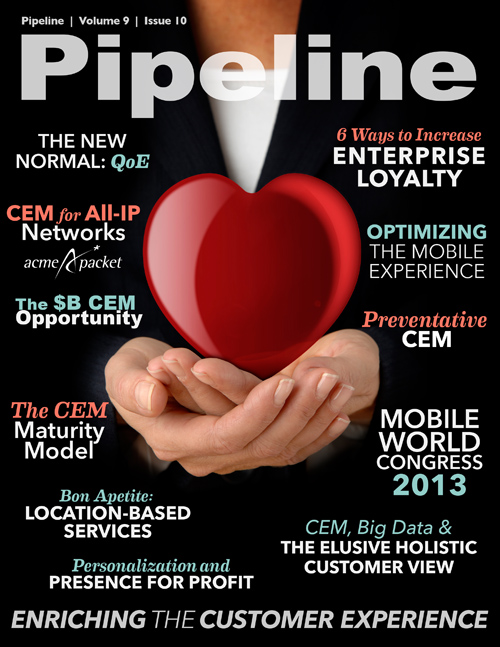The New Normal: QoE

Technology and service providers alike have been talking about customer experience management (CEM) for quite some time, and today just about anyone who does anything related to communications technology seems to have jumped on the bandwagon. However, very few technology solutions actually interact with customers or directly impact their experience. There isn’t any doubt that the customer experience is one of the most important, if not the most important, differentiators in today’s communications and entertainment (COMET) marketplace, but what exactly is it?
Know thy own
In order to understand the customer experience, a service provider must first understand the customer: who they are, what they’re experiencing and when and why they’re experiencing it. Service providers must understand the customer’s perspective, but to do this effectively it requires a comprehensive solution that enables it to efficiently capture customer information from various sources and productively manage its relationship with its customers.
Relationships in general are complex and customer relationships are no exception. Today’s dynamic, real-time, on-demand customer services depend on multiple network technologies and reliable connectivity to multiple devices. The customer experience can start anywhere — retail center, website, mobile device — and be impacted by a myriad of issues, including billing, services, devices, and connectivity.
In addition, modern CRM (customer relationship management) systems have become key enablers in capitalizing on the customer relationship, enabling cross-sell and upsell campaigns aligned with service usage and customer preferences, preemptively addressing service issues and even taking the temperature of customer sentiment from social media and other dynamic sources of customer information in order to proactively prevent churn. The problem is, many operators don’t have modern CRM systems today.The problem with transformation
Many top-tier service providers believe transformation is a dirty word, and on one hand they’re right. Consistency, automation and predictability are vital to an organization’s success, and by designing a system to support rigid, time-proven procedures that replicate a successful process, providers have been able to hone their operational efficiency to increase productivity and profitability. But when is it time to change?
As important as it is to capitalize on fundamental business processes, they need to be evaluated against the balance between the cost of change and the cost of failing to change. When the latter is significantly higher; it’s probably evolution knocking at your door. And when you factor in the increased rate of change in today’s COMET marketplace, it suggests that current support systems have to be able to keep up with an almost constant rate of transformation if service providers hope to remain competitive and manage ever-evolving customer expectations. The need for dynamic systems that are easy to use, quick to implement and simple to modify are critical for keeping pace. Costly overhauls of lengthy transformation processes no longer work — as by the time they’re operational the needs of the service provider will have probably changed.




















